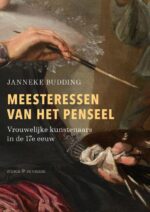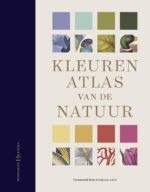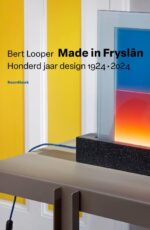Het raadsel Vermeer
€ 27,50
Het meisje met de parel en Gezicht op Delft van Johannes Vermeer (1632-1675) behoren tot de meest gewaardeerde schilderijen ter wereld. Ondanks zijn vermaarde reputatie weten we zo goed als niets over de Delftse meester-schilder. Er is geen brief of ander schrijven van hem bewaard gebleven, alleen in notarisakten wordt zijn naam een enkele maal genoemd. Tekeningen, schetsen, voorstudies of andere artistieke uitingen ontbreken. Zijn biografie bestaat voor een groot deel uit vermoedens en veronderstellingen. We moeten het doen met de vijfendertig schilderijen die de tand des tijds hebben doorstaan.
Wat wilde Vermeer met zijn schilderijen zeggen, wat vertellen ze over zijn leven, wat weten we over zijn werkwijze, wie waren zijn modellen, wie zijn opdrachtgevers? Aart Aarsbergen gaat in dit boek op zoek naar de ‘man’ achter de schilder en plaatst hem in de turbulente wereld waarin hij leefde – de Gouden Eeuw. Hij brengt de schilder dichterbij door werkelijkheid, mythe en fantasie te scheiden.
Aart Aarsbergen (1953) studeerde geschiedenis aan de Universiteit Utrecht. Hij was van 2001 tot 2018 hoofdredacteur van de Nederlandse editie van National Geographic. Hij publiceert in diverse media over geschiedenis, politiek, sport en literatuur.
“Een boek dat je voortdurend doet verlangen naar de kunst van Vermeer te kijken.” – Het Parool
Podcast De Nacht van… – NPO Radio 1
Kunsthistoricus Sanne Frequin bespreekt Het raadsel Vermeer – OVT
Gerelateerde boeken
-
-
Het Lam Gods
€ 34,90Het Lam Gods van Jan en Hubrecht van Eyck is een uitzonderlijk meesterwerk, een van de invloedrijkste schilderijen ooit gemaakt. Peter Schmidt schetst de historische achtergrond, het ontstaan en de lotgevallen van het altaarretabel. Hij leidt de lezer binnen in de complexe verhouding tussen beeld en interpretatie. De iconografische rijkdom van Het Lam Gods is niet gemakkelijk te doorgronden. De auteur gidst ons langs de vierentwintig panelen van het veelluik, waarbij de bijbel en de geschriften van de kerkvaders gebruikt worden als sleutels.
Peter Schmidt is titulair-kanunnik van de Sint-Baafskathedraal, doctor in de theologie en vermaard exegeet. Hij is lid van de European Academy of Sciences and Arts in Wenen.
-
Made in Fryslân
€ 17,90In Made in Fryslân vertelt Bert Looper het boeiende verhaal van design in Fryslân in de afgelopen honderd jaar. Het is een verhaal van voortdurende innovatie in traditie. De klassieke rotanstoel uit Noordwolde veranderde in handen van Gerard van den Berg in de spannende ‘stoel van het jaar 1985’. De eeuwenoude keramiek van Tichelaar Makkum werd opzienbarend design door de creativiteit van Studio Job en Hella Jongerius. Christien Meindertsma maakte furore op de ‘Salone’ van Milaan met haar interpretatie van het Hindelooper meubel. En Claudy Jongstra laat in haar viltkleden zien wat ecologisch activisme en design kunnen betekenen voor de maatschappij van de eenentwintigste eeuw. Kortom, de vruchtbare combinatie van traditie en ambacht, kunst en vernieuwing vormt de rode draad in het verhaal van Fryslân als een verrassende broedplaats van design.
Bert Looper is historicus en publiceert boeken en artikelen over geschiedenis, kunst en design.





